The Tigranakert of Artsakh
Hamlet Petrosyan (Institute of Archaeology and Ethnography, National Academy of Sciences of Armenia, Yerevan State University)
The city of Tigranakert of Artsakh occupies the lower valley of Khach‘enaget river (see map) and encompasses an area of more than 70 hectares (Fig. 1). The fortified quarter and the urban neighborhoods spread across the southwestern slopes of Mount Vank‘asar and extend into the adjoining concavity near the “Royal Springs”. The immediate environs of the city, measuring approximately four-square kilometers, include the monuments of Vank‘asar and Ts‘its‘-Sar, an antique Eastern necropolis, an irrigation canal, and an Early Christian rock-carved complex.
The city was founded in the late 90s BC by the Armenian King Tigranes II the Great (95–55 BC). Traces of Tigranakert were discovered in 2005. Between 2006 and 2020, an archaeological expedition of the Institute of Archaeology and Ethnography of the National Academy of Sciences of the Republic of Armenia conducted extensive excavations at the site. Among the numerous settlements bearing the name of Tigranes, Artsakh’s Tigranakert is the only one whose exact location has been identified and thoroughly investigated. In 2010, on the basis of the rich archaeological materials uncovered during the excavations, an archaeological museum was established at the site.
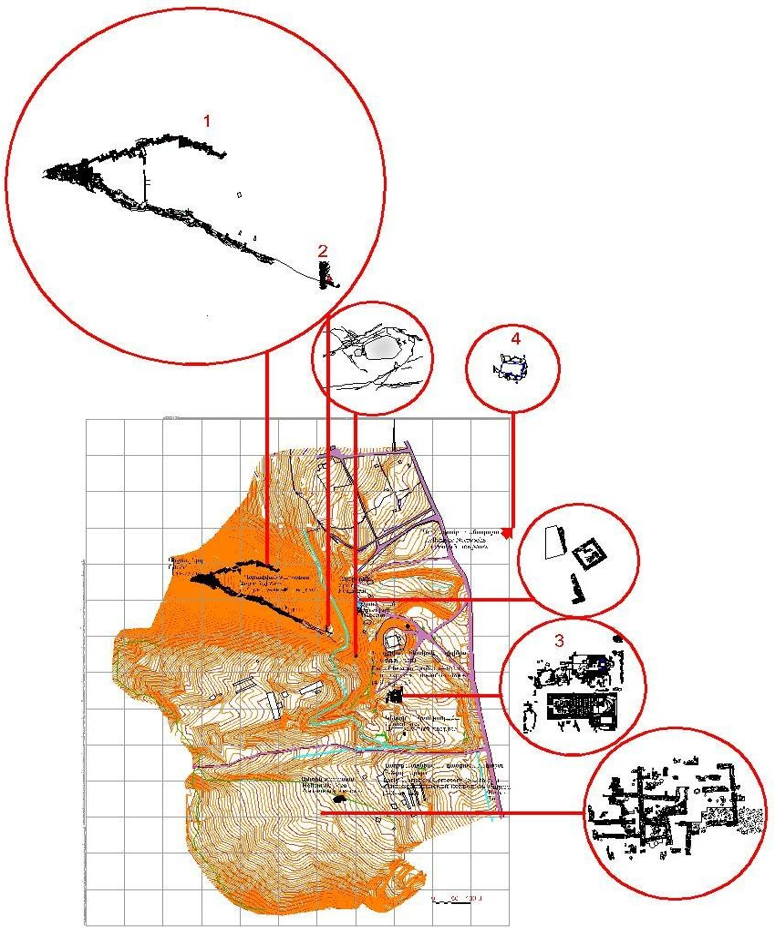
Archaeological investigations indicate that the Tigranakert of Artsakh was an extensive settlement founded using advanced Hellenistic fortification and urban planning principles, as well as sophisticated construction techniques. Established in the first century BC, it endured until the late thirteenth century AD (Fig. 2). The city comprised a large, fortified quarter (the Citadel) on the slope of the mountain, built on artificial terraces and enclosed by powerful walls, urban neighborhoods extending across the plain, cemeteries, and extensive agricultural suburbs. The entire city was constructed using locally quarried, milk-colored limestone.
The Fortified Quarter
The fortified quarter occupies a triangular promontory. A rectangular tower stands at the summit, from which the southern and northern walls - forming the sides of the triangle - extend downward. The individual foundations of the outer and inner walls were cut into the rock in the shape of bands, with recesses for individual ashlars (stone blocks). These recesses were filled with lime mortar, into which the ashlars were embedded and fixed. Apart from securing the first row of ashlars and filling the spaces between them, the mortar also sealed the gap between the base and bedrock to prevent rainwater from penetrating beneath the foundation. The fortification wall was carefully adapted to the vertical and horizontal contours of the terrain, skillfully combining various grooves, tiers, and platforms. Its base does not rest on a single monolithic structure but on three separate “supports” (the outer and inner wall chamfers and the core between them) - a design that served an anti-seismic function by dispersing shocks near the foundation.
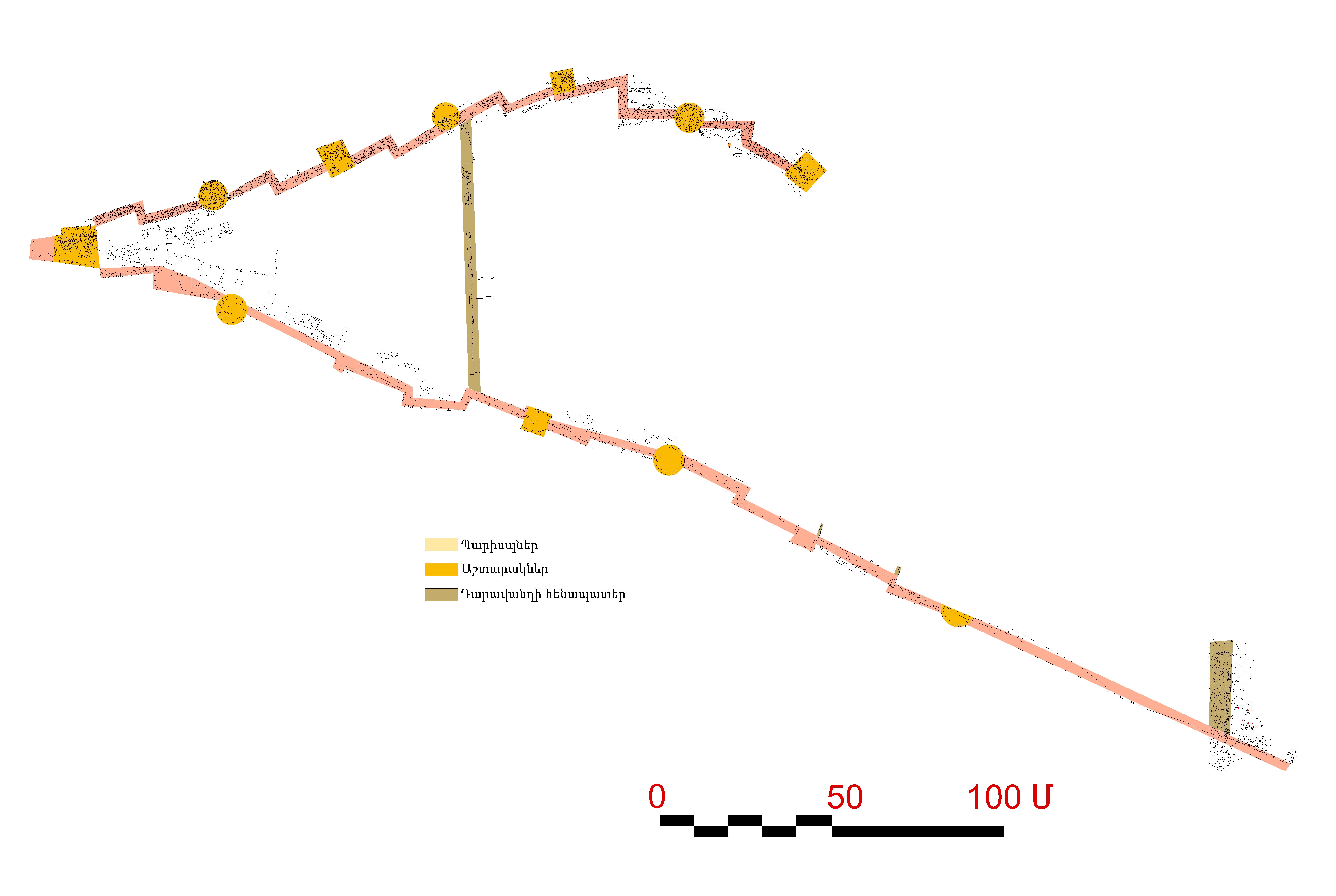
The ashlars in the outer and inner courses of the wall have perfectly finished contact surfaces, a rustic (“pillow-like”) finish on the exterior faces, and skillfully executed chamfers (the beveled cuts along the outer edges of the ashlars). The larger ashlars are simply placed one atop another, while the smaller ones are additionally fastened to each other using “swallow-tail” clamps - a technique widely used in Asia Minor, Mesopotamia, and the Ararat Plain, yet revealed for the first time in Artsakh.
The fortress of Tigranakert presents a triangular model, whose characteristic components include successive rectangular and circular towers connected by a zigzag curtain wall. Variations in the lengths and directions of the curtain segments serve as technical measures for fitting this triangular design to the site’s natural defensive advantages.
Tigranakert’s defensive system exhibits close parallels with certain classical Near Eastern sites (Miletus, Ephesus, Pergamon, Priene, Magnesia on the Maeander, Dura-Europos, etc.), as well as with a number of Transcaucasian monuments (Artashat, Armaztsikhe-Bagineti). The city was constructed by making full use of the advanced architectural concepts and building techniques of its time, making Tigranakert an exemplary monument of the late first century BC through the early first century AD. Compared to similar monuments, Tigranakert is significantly better preserved.
Excavations have yielded painted pottery from the first century BC to the first century AD, along with metal objects and jewelry. Noteworthy are the discoveries of an antique seal-stone and Sassanid seal impressions, indicating that Tigranakert played an important commercial and administrative role.
The Urban Neighborhoods of the Antique Period
The city’s antique neighborhoods, situated at the foot of the fortress in the plain, greatly illuminate Tigranakert’s urban character. Of the four archaeologically attested antique districts, excavations have focused on part of the “First Antique District” (Fig. 6), with exploratory investigations conducted in the Second Antique District. The First District was founded simultaneously with the fortress and persisted until the seventh century AD. Its layout follows principles similar to the Hippodamian system: straight street segments, straight walls, and rectangular intersections. The excavated section is organized around a north-south wall (exposed along a length of 25.5 m), flanked on both sides by residential-economic complexes composed of roughly square rooms. During two subsequent phases of construction (3rd–7th centuries AD), reconstructions largely repeated earlier layout solutions. The rooms have clay-coated floors, in some cases with traces of lime plaster. Simple stone foundations for wooden columns supporting the roof have been preserved. In some rooms, hearths were installed about 0.30 m above the floor; in the later antique phase, oven-pits (tonirs) were introduced in certain rooms. In paved sections of the floors, limestone steps are fixed in place. The discovery of broken grinding stones and quern fragments, along with the remains of large storage jars embedded in the floor, indicates that each household processed its own grain. Several dozen conical, pyramidal, and disk-like spindle whorls made of raw clay attest to domestic textile production.
Tigranakert’s antique pottery deserves special mention. Tens of thousands of sherds and dozens of intact vessels range from black burnished ware to red-polychrome pottery, including large storage jars and churns, as well as delicate pitchers, flasks, various bowls, and fishponds. The black-glazed vessels decorated with grape clusters and classic polychrome wares of Atropatene origin bear distinctive features suggesting that Tigranakert set cultural standards for the right bank of the Kura River. Imported pottery has also been identified, with parallels to Seleucia on the Tigris and Dura-Europos.
The Antique Eastern necropolis
Situated on the plain about 1.5 km northeast of the main city, the antique cemetery has yielded one cist grave and six jar burials through excavation. Another jar burial was found inside the fortress, near the northern wall. These burials do not share a single orientation: the horizontally placed jars display varying angles along the northwest-southeast or northeast-southwest axes. Discoveries include well-preserved Parthian silver drachms, examples of weaponry and household objects, and a variety of ornaments (beads wrapped in gold foil, rings with gemmae, gold pendants, earrings, hundreds of beads), along with remarkably intact jars and water jars. One amphora-like jar features a painted band on the shoulder depicting a hunting scene: in a wooded area of massive trees, deer are chased by dogs, with hunters armed with spears and bows - both on foot and on horseback.
In the late first century BC and early first century AD, jar burials were prevalent over an extensive region. Recent research suggests that this funerary practice was especially common in Transcaucasia. It is evident that this was the predominant pre-Christian burial custom in Artsakh and Utik.
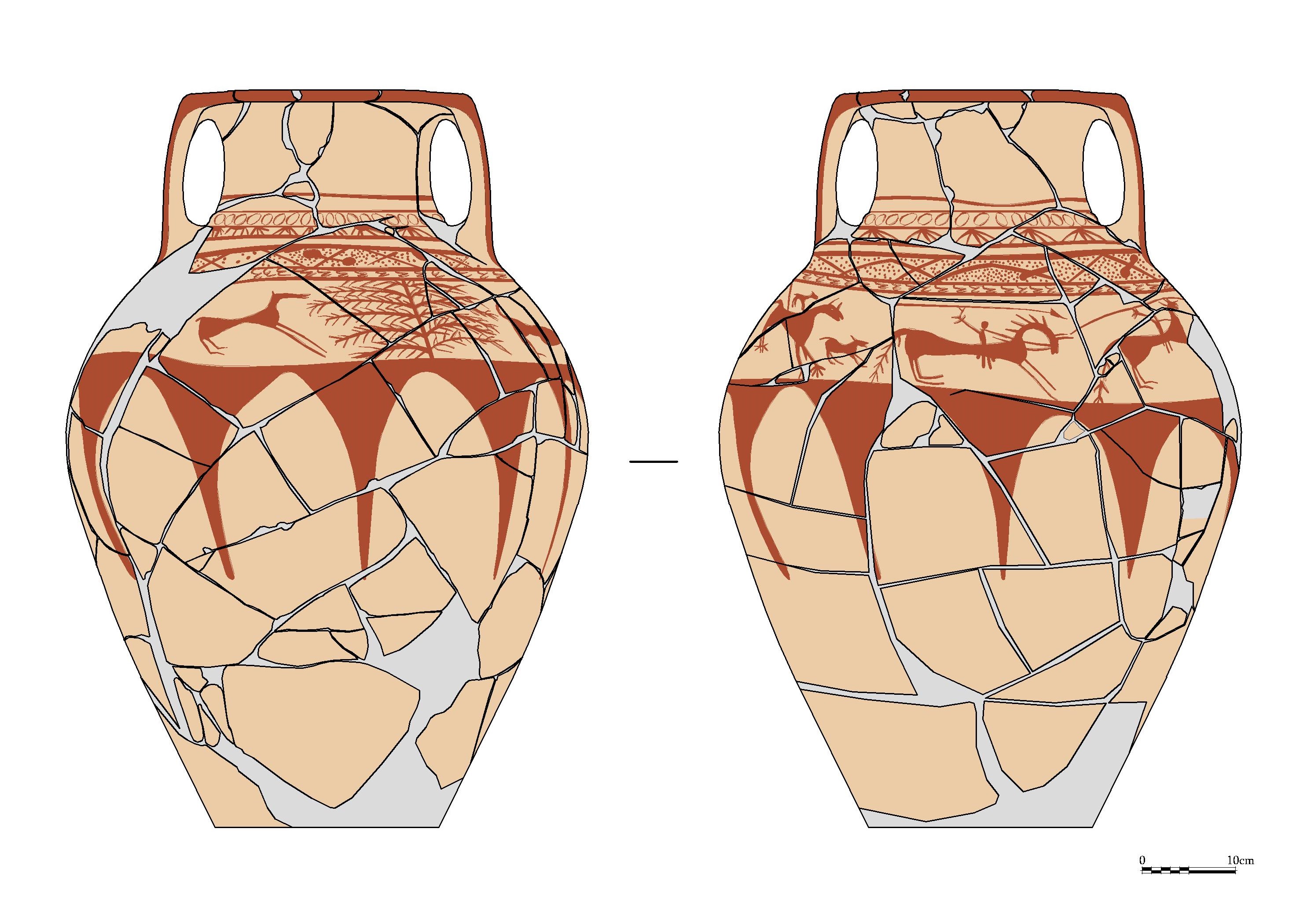
The Early Christian Square
During the Early Christian period, Tigranakert evolved into a major military-administrative and religious hub near Partav. Medieval traces of the city are visible on a plateau of roughly seven hectares, which rises 4-6 meters above the surrounding terrain and extends southeast of the late medieval fortress. In its central section, before excavations began, large accumulations of masonry were observable near a broad concavity. Between 2006 and 2009, archaeologists uncovered the remains of a substantial Early Christian church (the large church, Fig. 10), lying about 3.5 m below the surface. This single-naved basilica with a five-sided apse from the outside dated back to the 5th-6th centuries AD. Later, it was included within a rectangular volume, and a southern sacristy (with an exterior entrance) was added. Constructed with massive hewn blocks and lime mortar on a three-step substructure, the church had one western entrance, paired southern and northern entrances, a dentil cornice, a timber roof, and ceramic tiles. Each of the main entrances featured flanking columns topped with elaborately carved capitals. Excavations unearthed numerous fragments of dentil cornices, colonnade elements, hundreds of tile shards, and two capitals featuring crosses in “celestial” and “floral” motifs (Fig. 11). Of particular note is a clay disk bearing an Armenian inscription from the 5th–6th centuries AD (Fig. 12). The church was destroyed and burned at the end of the ninth century; new residential complexes were subsequently built over its ruins.
Excavations in the northern courtyard revealed a flagstone pavement associated with an Early Christian winged cross monument, a single-ailed smaller church with an externally articulated apse (“Small Church”), a burial ground to its west, and remnants of a reliquary beneath the eastern apse. The existence of such a large and richly developed Early Christian square underscores that Tigranakert retained its status as a notable settlement in the Early Middle Ages. Within the city’s immediate environs are the 7th-century Vank‘asar Church (Fig. 13), a tunnel-sectioned irrigation channel (Fig. 14), an Early Christian rock-cut complex (Fig. 15), and the shrines of Ts‘its‘-Sar (Fig. 16); all of them have been studied in detail.
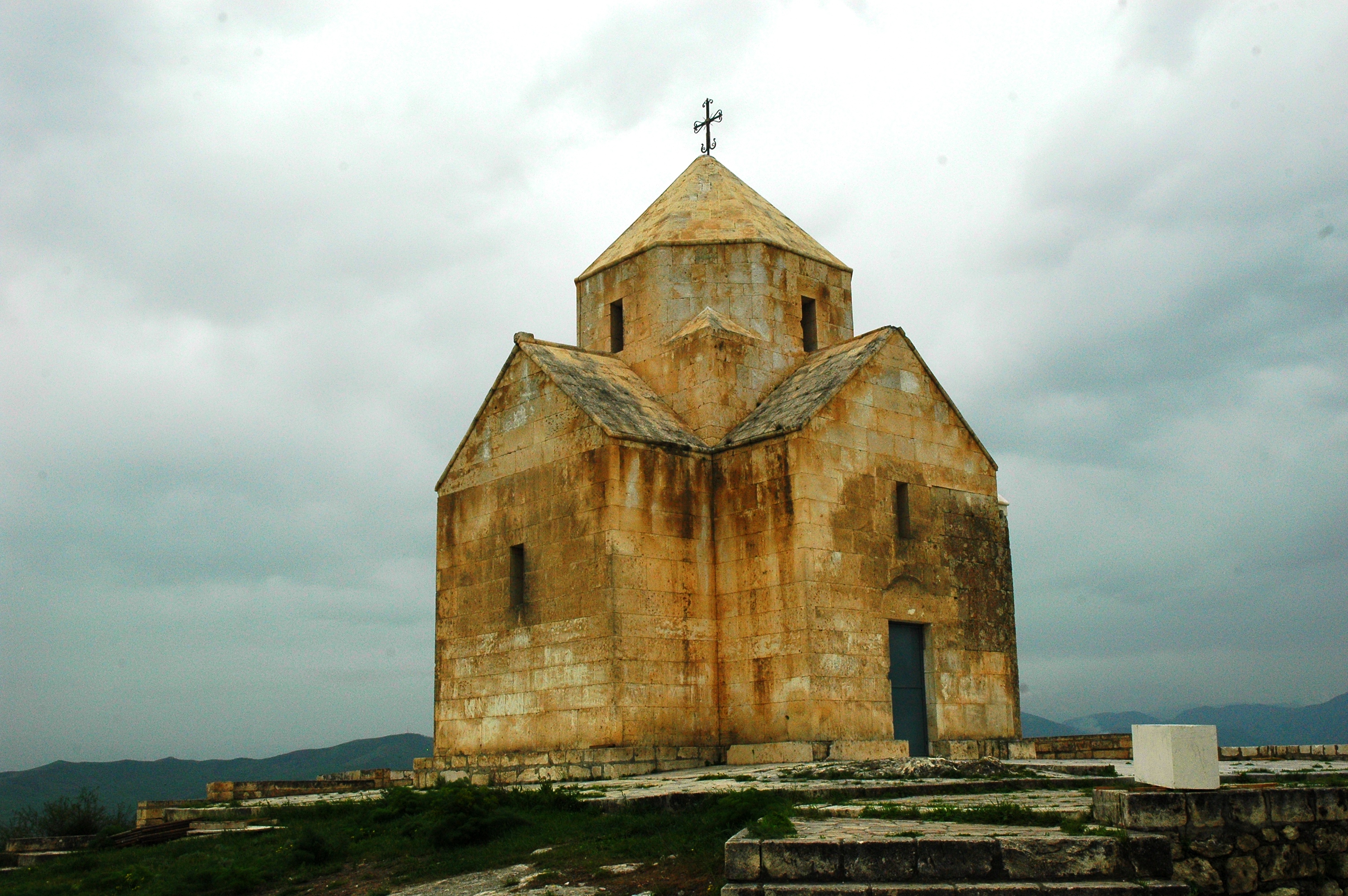
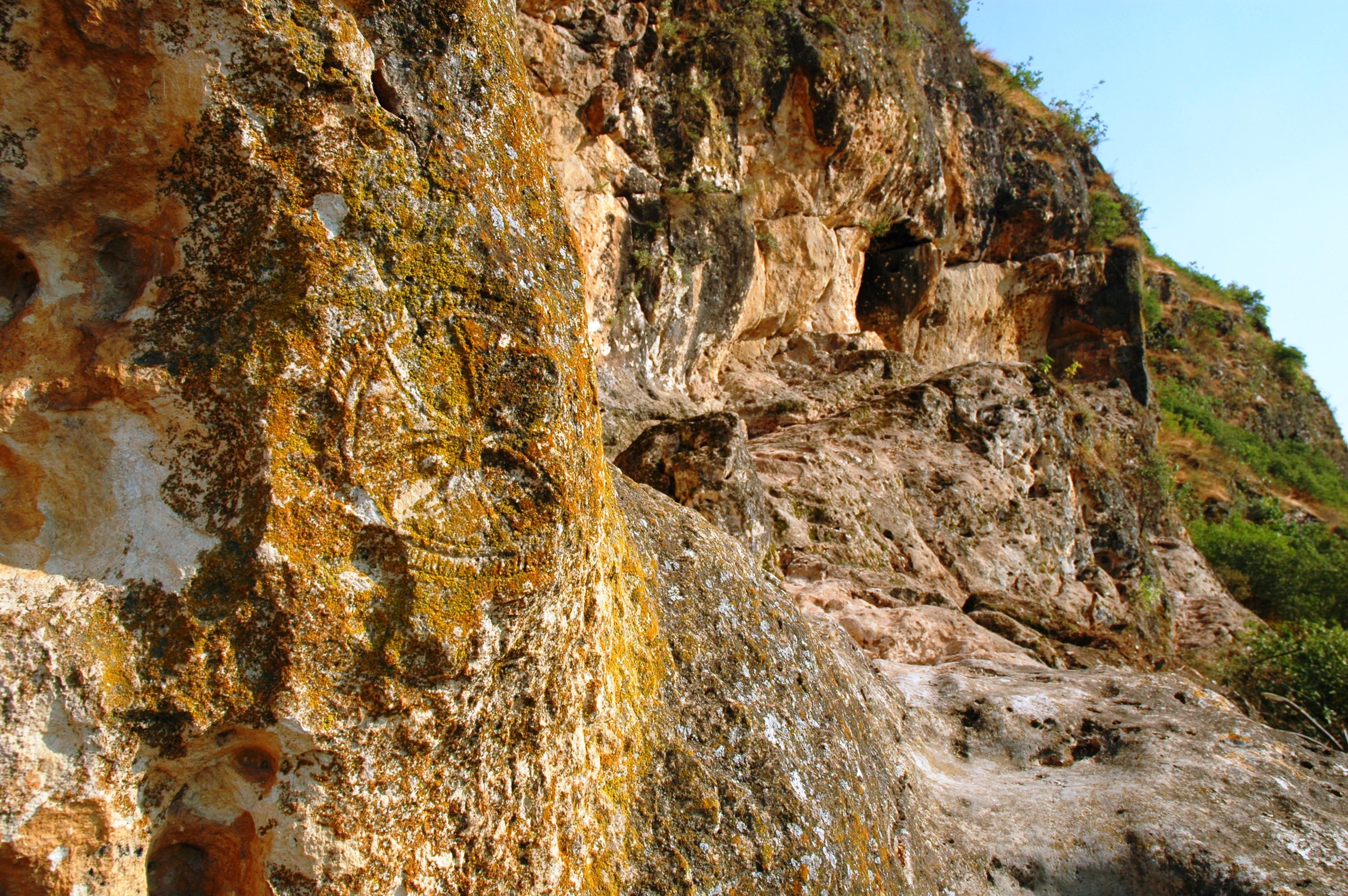
During the 44-Day War between the Republic of Artsakh and the Republic of the Azerbaijan (27 September–9 November 2020), Tigranakert was subjected to shelling from the Azerbaijani military forces. The archaeological camp at the site (Fig. 17) was completely destroyed, but the collections of the Tigranakert Archaeological Museum were evacuated and remain in secure locations.
Bibliography
Petrosyan, H., “Tigranakert in Artsakh”, in J. Gippert – J. Dum Tragut (eds), Caucasian Albania. An International Handbook, Berlin – Boston: De Gruyter, 2023, p. 433–471.
Petrosyan, H., “Early Christian Archaeology and Monuments in the Armenian-Azerbaijani Conflict Zone: Tigranakert, Amaras, Vachar”, in A. Müller, H.G. Harutyunyan, D. Heller, M. Tamcke (eds), Das kulturelle Erbe von Arzach, Kiel: Kiel University Publishing, 2024, p. 467–489.
Petrosyan, H., “Politics, Ideology and Landscape: Early Christian Tigranakert in Artsakh”, Electrum, 28 (2021), p. 163–187.
Petrosyan, H., Safaryan, V., Karapetyan, I., Kirakosyan, L., Vardanyan, R., Vardanesova, T., Gabrielyan, A., “Pithos Burials of Tigռanakert of Artsakh”, in P. Avetisyan – A. Bobokhyan (eds.), Archaeology of Armenia in regional context. Proceedings of the International Conference dedicated to the 60th Anniversary of the Institute of Archaeology and Ethnography (2019, 9–11 July), Yerevan: Academy of Sciences of Armenia, 2021, p. 293–304.
Petrosyan, H., “The Tomb-Relic Structures of Artsakh with eastern entrance and the Issues of Political and Ideological-Ritual Distinction of the Church of Caucasian Albania in the 5th-6th Centuries”, Banber Matenadarani 29 (2020), p. 218–238.
Petrosyan, H., “The Odyssey of the Archaeological Museum of Tigranakert of Artsakh”, Proceedings of the History Museum of Armenia 10 (2022), p. 183–188; 221–224.
